Calathea plant care and growing guide: top tips for these popular houseplants
Calathea are almost unbeatable for their incredible leaf patterns, and with our care advice you can keep your plants looking beautiful all year

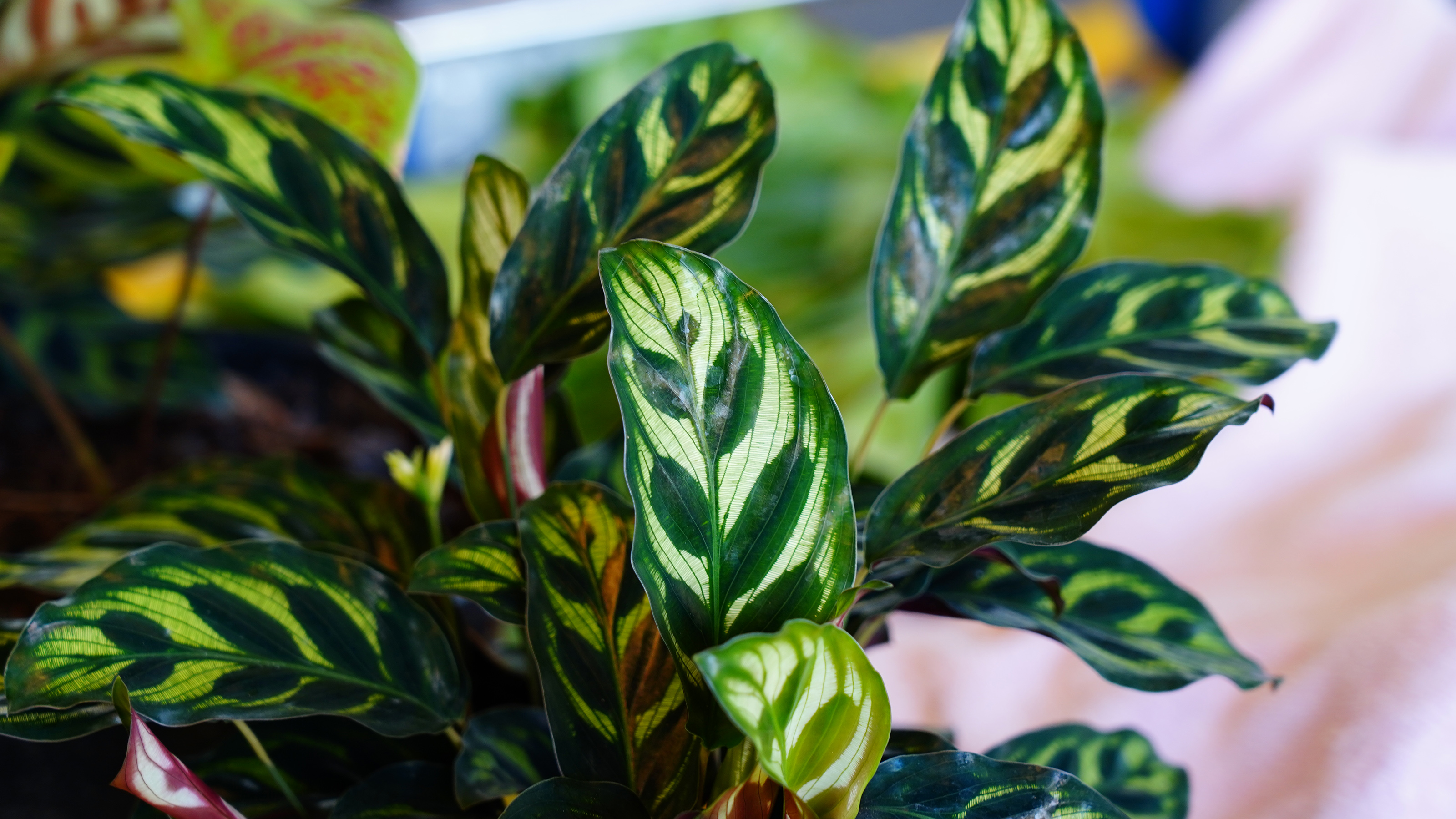
It’s almost impossible to pass by calathea at a garden center without doing a double take, their dazzling foliage and rich colors making them hard to resist. The most popular include the beautiful peacock plant (Goeppertia makoyana), which has large, oval, pale green leaves decorated with dark green brush strokes on the upper surfaces and purple markings beneath, offering color from every angle.
The rattlesnake plant (Goeppertia lancifolia) is another dramatic calathea, its tall sword-shaped pale and dark green patterned leaves, red-purple beneath, resembling the patterns on the snake after which it’s named. Others are grown for their blooms as much as their foliage. The eternal flame (Goeppertia crocata) is one of the best known, its bright orange torch-like blooms appearing from spring to summer between purple-flushed, dark green, wavy-edged leaves.
You may also find these plants listed under their new Latin name Goeppertia, since they have been reclassified in recent years, but most people still know them as calatheas.
But before you’re tempted to add, what are considered to be one of the best indoor plants to your collection, make sure you can replicate the warmth and humidity of their native homelands in the jungles of South America.
If you can offer the correct calathea care in the right conditions, they won’t take up much space, since all calatheas are fairly compact, rarely growing to more than 2ft (60cm) in height and spread.
3 top tips for calathea care
Like many prima donnas of the plant world, these star performers are not the easiest to care for but, given the attention they deserve, they will grace your indoor garden ideas for many years. Simply follow the tips below for success.
1. Find the right light conditions
Indoor plants with patterned leaves generally need bright but filtered light and calatheas are no exception. As you would do with elephant ear plant care, whose leaves are similar to that of calathea in that they have beautifully patterned foliage, set them in a sunny, humid room, such as a kitchen or bathroom, on a table or shelf away from the window, so that they are not in direct sun.
This will prevent their leaves from scorching and drying out, which can lead to discoloration. They also prefer a constant warm temperature, above 61˚F (16˚C), all year round. Also keep your plants away from drafts and radiators.
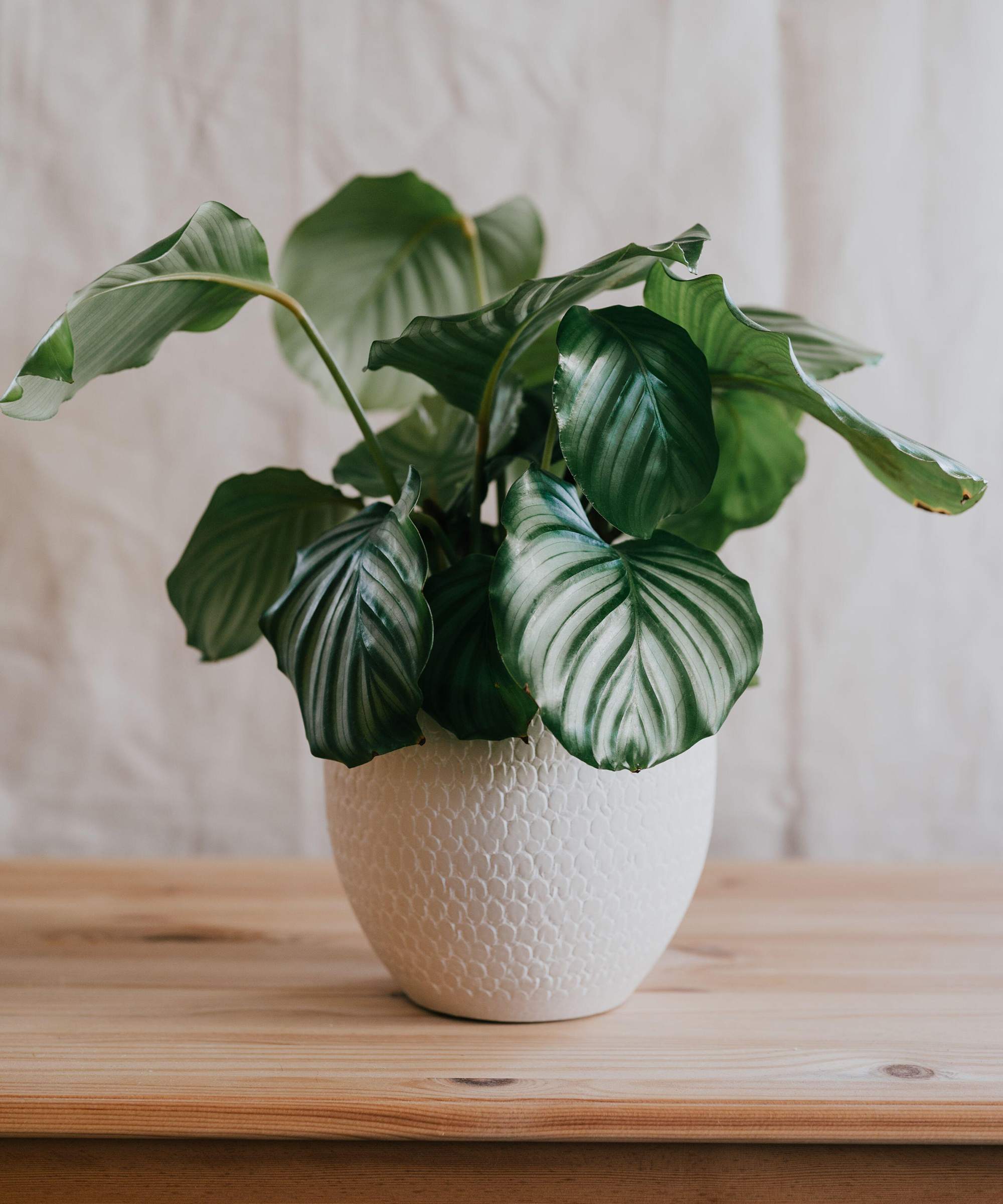
2. Keep the correct balance of moisture
Calathea plants like humidity, and so make good plants for bathrooms. But don't overwater them as they will rot if their compost is soggy and wet. To achieve this delicate balance, plant your calathea in houseplant potting compost in a container with drainage holes in the base, which you can then insert into a waterproof pot to display it.
From spider plants to snake plants, most indoor plants will ideally prefer to be watered with rainwater or distilled water – if applying tap water leave it in a jug for 24 hours to allow the chlorine to dissipate – and water your plant in a sink. Then leave it to drain fully before returning it to its waterproof container.
Watering in this way, keep the compost moist from spring to autumn, and reduce the frequency in winter, applying moisture only when the top of the compost feels dry.
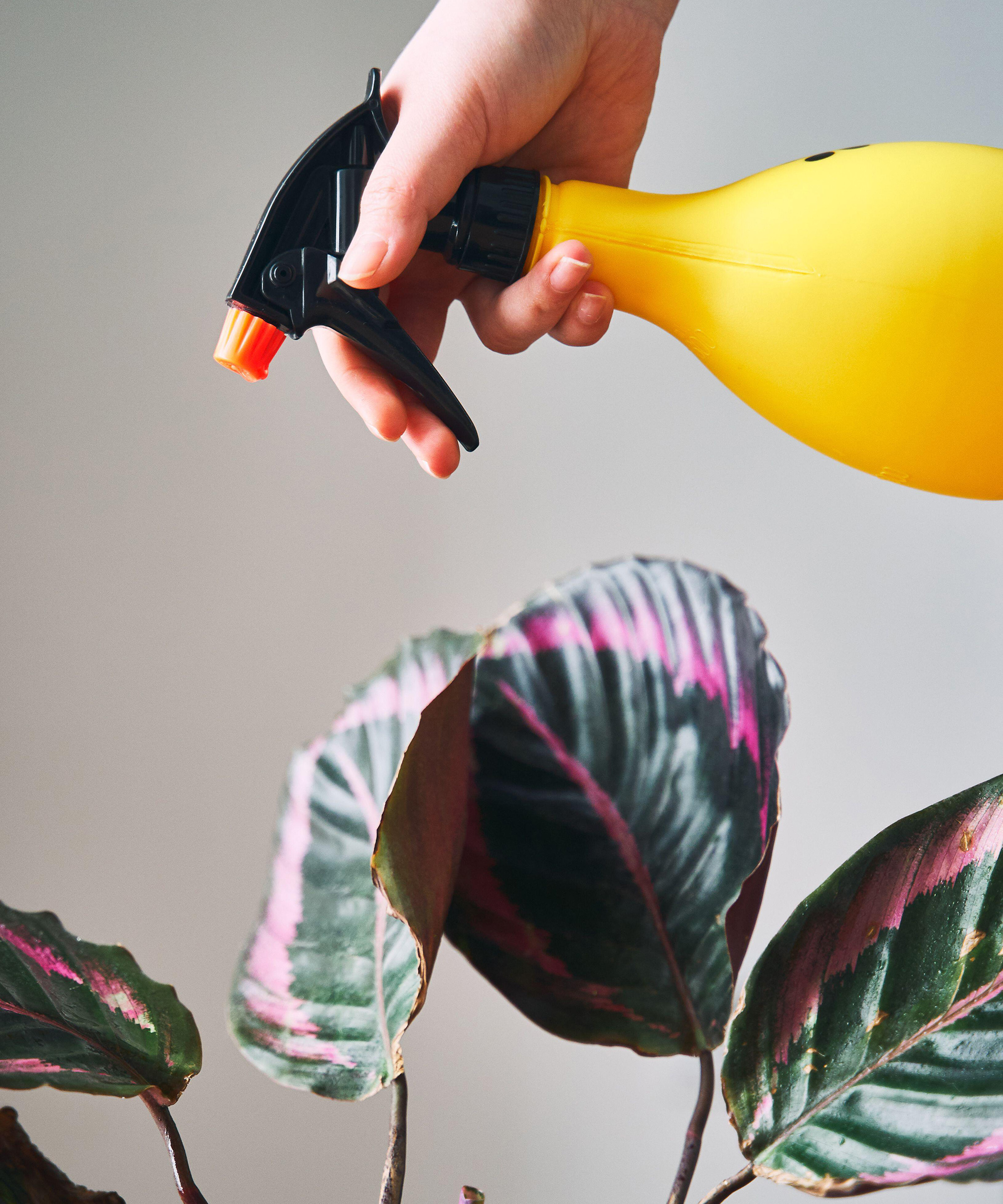
3. Add feed and boost humidity
Add a half-strength balanced fertilizer every two weeks from spring to fall – plants do not need feeding in winter.
To raise the humidity levels around your plants, mist them every few days with tepid water as you would when performing air plant care, or set their pots on shallow trays filled with pebbles and topped up with water. Some aficionados may even install humidifiers to keep these beauties happy.
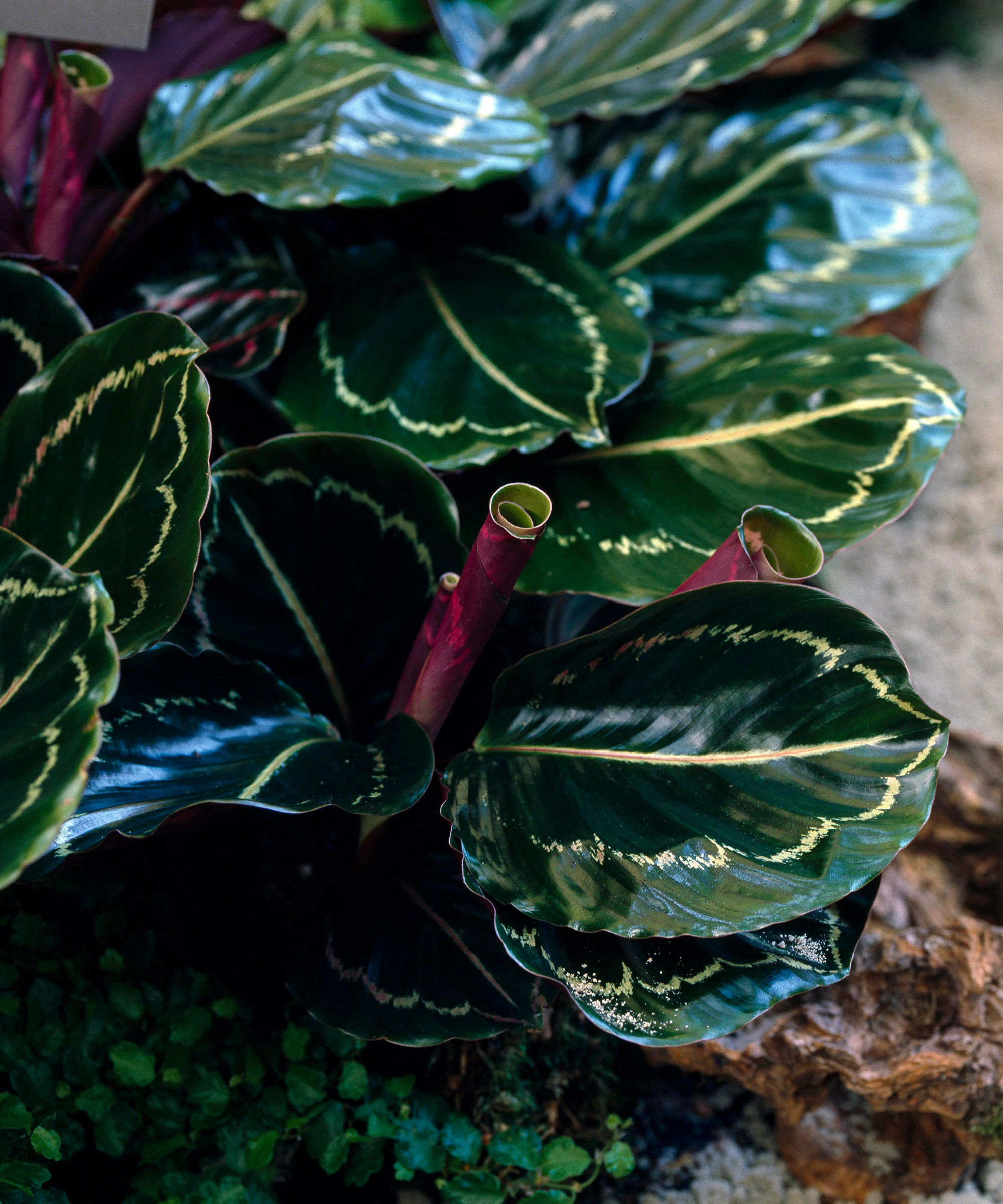
Things which can kill a calathea
- Overwatering: This can quickly lead to rot, which results in the stems and leaves discoloring and collapsing, killing the plant, so make sure your plant pots offer good drainage and check that they are never sitting in water.
- Underwatering: This can also cause wilting, or the leaves may curl and turn brown, but this problem is easier to rectify and rarely fatal – simply water your plant as described above and it should revive.
- Pests: Whitefly and red spider mite occasionally attack these plants, so inspect the leaves regularly and remove any that look discolored or, in the case of whitefly, apply the tiny parasitoid wasps, Encarsia formosa, which prey on the juvenile flies. You can buy these wasps online and simply hang the cards that contain the wasp pupae above your plants.
- Dry air: Similar leaf discoloration can occur if the air is too dry, so ensure your plant is misted every few days or set it on a tray of damp pebbles as you would do for orchids.
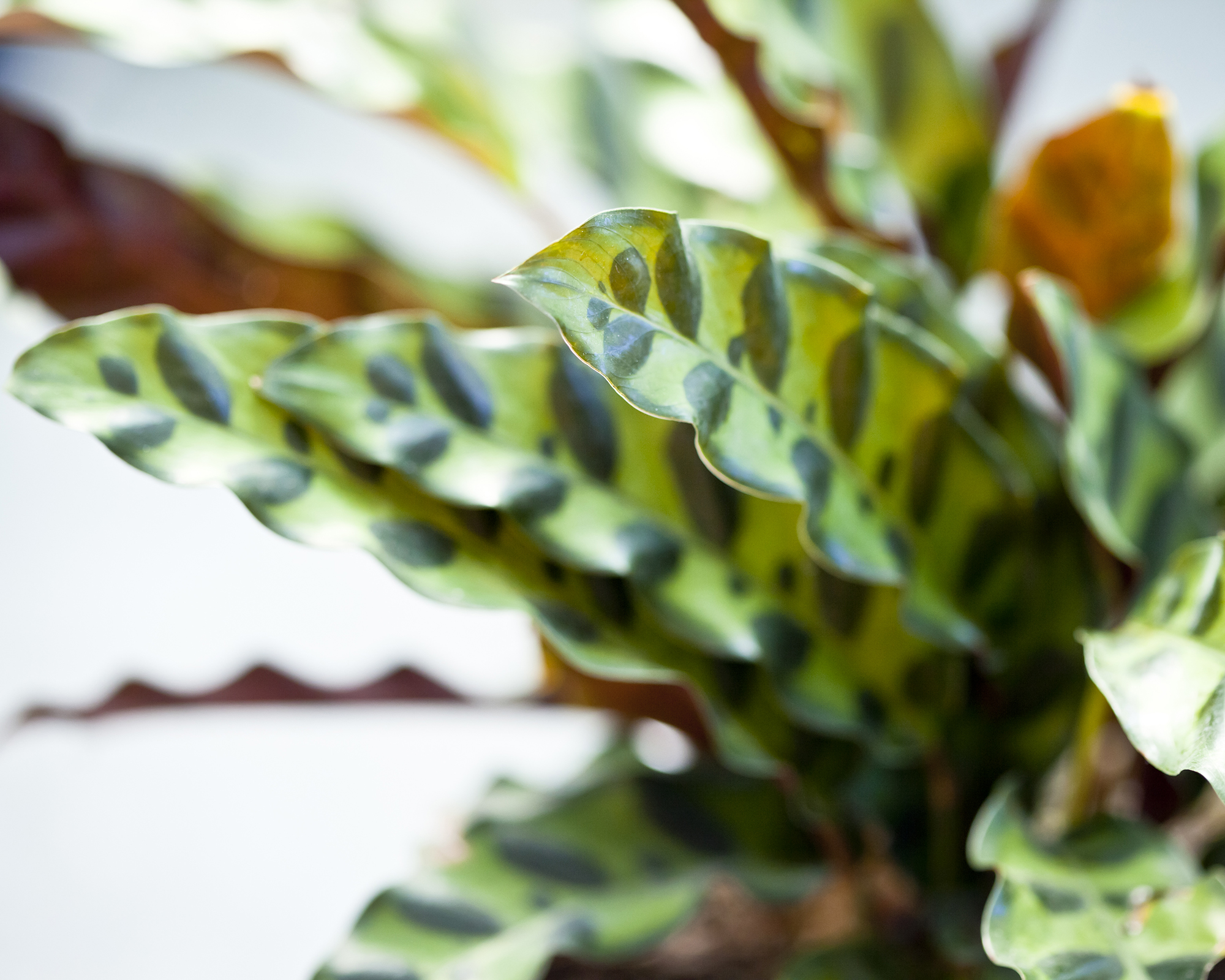
Propagating calatheas
Calatheas are easy to propagate by division unlike the rubber plant which is propagated with cuttings. To do this, in early spring, just before plants come into active growth, take your plant out of its pot and use a sharp clean knife to cut the root ball into sections.
Remove old or tatty leaves from each section and check that the roots all look plump and creamy yellow, and then repot them into individual containers filled with fresh potting compost.
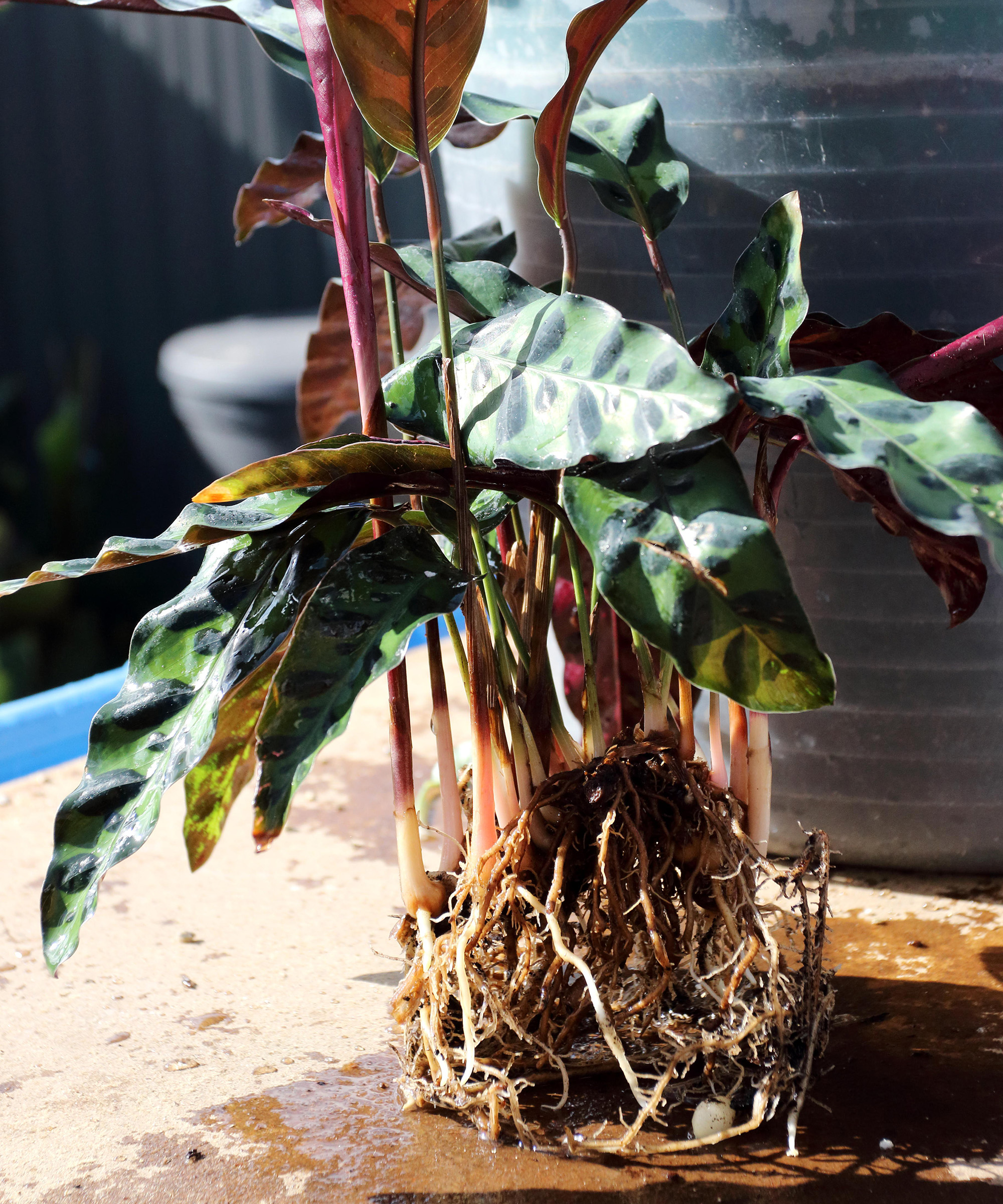
Can I put my calathea outside?
The answer depends on where you live. If your local climate offers consistently warm temperatures above 65˚F (18˚C) day and night, then the answer is yes, but for people living in the UK and other Northern European countries and the northern States of America where even summer nights can be quite cool, the answer is no. This is because these tropical plants need consistent warmth, and they will not thrive outside in areas where the temperature fluctuates and may dip below 61˚F (16˚C).
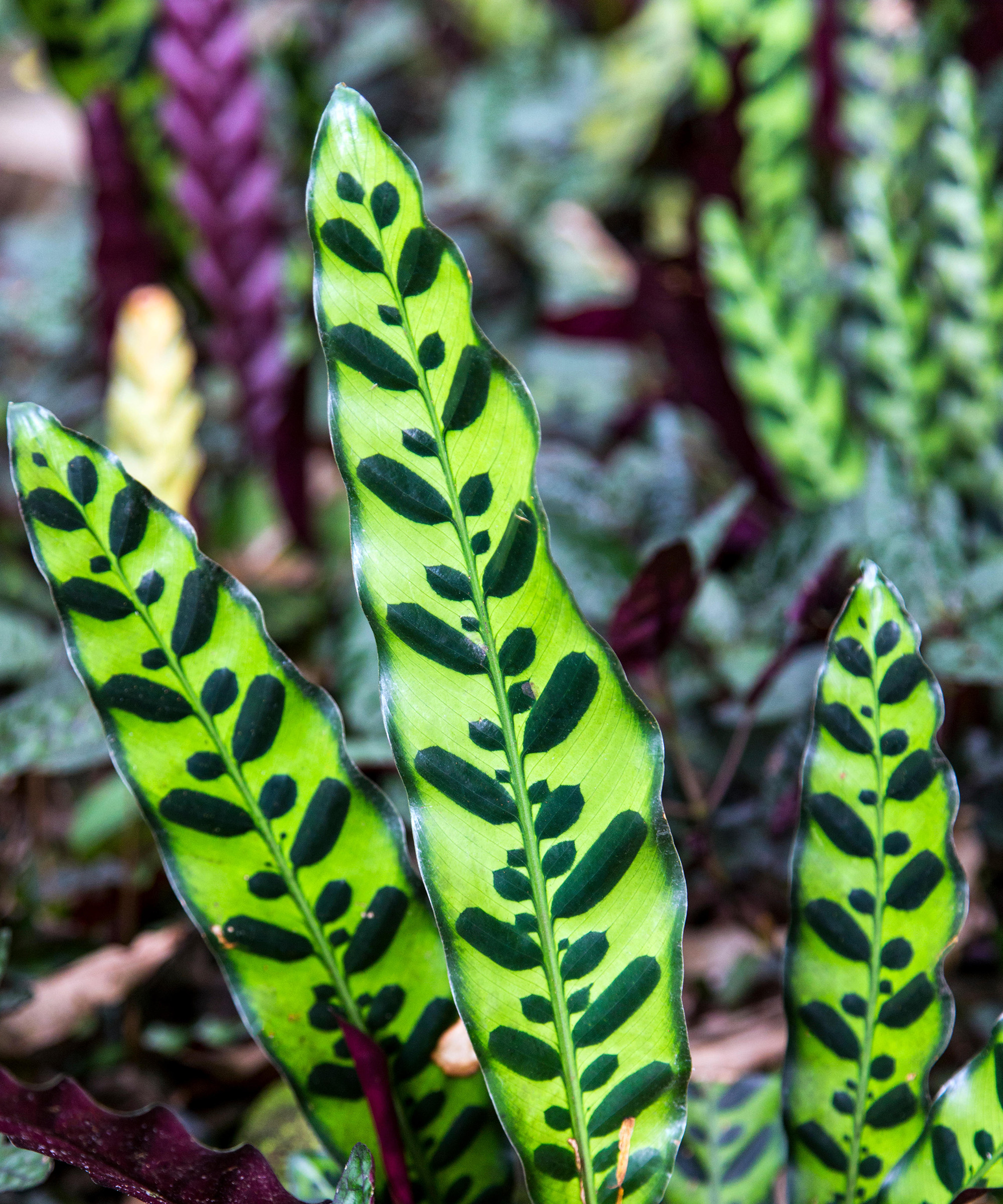
Why has my calathea got brown tips?
The leaves of a calathea may turn brown if the plant is receiving too much or too little water. Check that the compost is not soggy and if it is, pour any excess water out of its waterproof container and leave the plant on a draining board for a few days to dry out. If the compost feels dry, water it well over the sink, ensuring the moisture filters down to the bottom of the pot, then leave to drain.
Also make sure that the humidity around the plant is high enough by misting it regularly. Remove brown-tipped leaves at the base of their stems and healthy new shoots should then emerge after a few weeks.
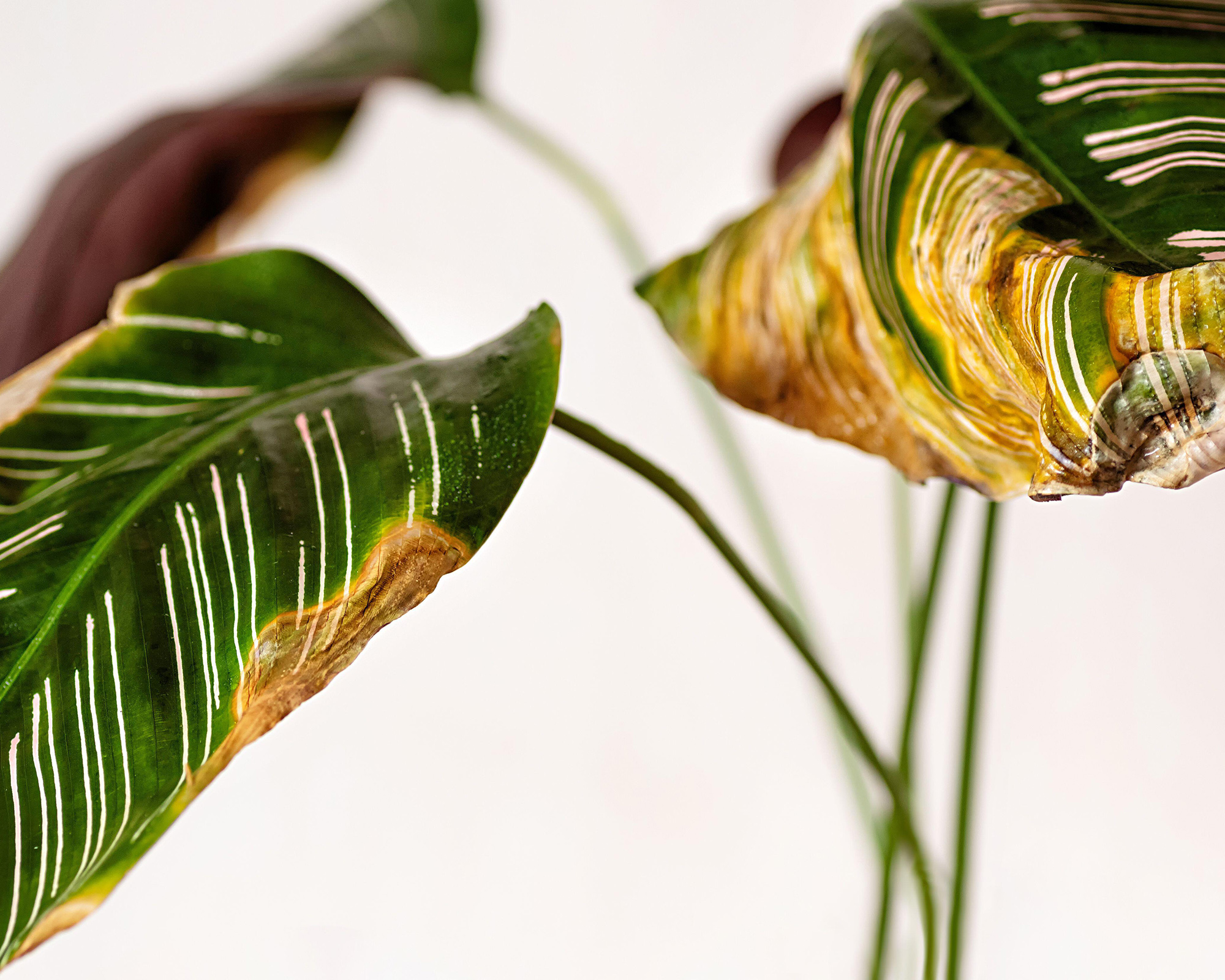
Why do calathea leaves fold up at night?
Calatheas belong to the same family as the prayer plant (Marantaceae), whose leaves fold up at night as if they are praying, hence the name. Calatheas’ leaves also move at night and will stand upright as dusk falls and splay out during the day when the foliage needs to trap sunlight to photosynthesize.
There are a few theories as to why they do this and one of the most likely is that it causes moisture on the leaves to drain away and thus prevent fungal diseases from developing. If the leaves fail to stand up at night, it may be because your room is too bright or too cold.
If the leaves of your plant curl during the day, they may be dehydrated or suffering from an attack by sap-sucking insects such as whitefly or red spider mite.

Zia Allaway is a garden book author, editor, and journalist, and writes for a range of gardening and women’s magazines, including Easy Gardens, Homes & Gardens and Livingetc, as well as The Guardian and The Daily Telegraph newspapers. She has also written books for the Royal Horticultural Society and Dorling Kindersley publishers, including Eco-Gardening, Compost, Low Maintenance, Practical House Plant Book, Practical Cactus & Succulent Book, Indoor Edible Garden, What Plant Where, and the Encyclopedia of Plants and Flowers.
